Twenty-three years may have passed since Remedy Entertainment first burst onto the scene with their MS-Dos and Windows-based game, Death Rally, but the Finnish developer is still going strong. Not only have they achieved success and made a name for themselves within the industry, thanks to some excellent efforts; they’re also about to release their ninth game. Needless to say, that’s quite a feat, especially when only two of those titles have been sequels. Then again, Remedy are one of the kings of the new IP game, for lack of a better term.
After mixing the television and gaming mediums with 2016’s impressive Quantum Break, the folks from Espoo are back with a brand new game. They call it Control, and for good reason. We’ve had a chance to spend a good amount of time with this latest effort, and must say that it’s further proof towards the apparent fact that Remedy is simply unable to make a bad game.
Control is the supernaturally infused story of Jesse Faden, a young woman with a strange past who finds herself in the main foyer of an even stranger building. They call it the Oldest House, and it’s different to say the least. Acting as the home base and headquarters of the aptly titled Bureau of Control, the building is an almost never-ending mix of halls, labyrinths, corridors and departments. What’s even more odd about this location is that it’s been hidden from the eyes of regular New Yorkers for an unknown amount of time.
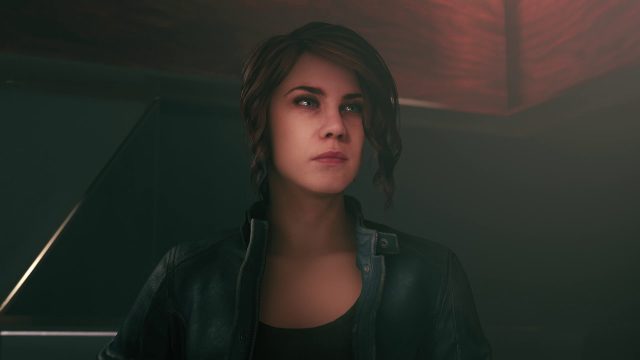
This is only the beginning of the weirdness to be found within this game, and that’s a good thing. To say that Control has an interesting and thought provoking storyline would be underselling it, and its setting only accentuates things. Reason being is that The Oldest House is home not only to an odd organization, but haunted items as well. You see, the Bureau of Control handles things that the everyday person isn’t exactly privy to. Things that would shock the regular Jane or John Doe, and would threaten to open the curtain to insanity.
It seems that the Bureau of Control has been in operation for some time, as their reach has extended into our own heroine’s life. She’s ventured to their base of operations for a reason, after all, but ends up finding out that her presence has been anticipated.
The best way to describe this interactive experience would be to call it a third-person shooter mixed with a heavy dose of action-adventure elements. The player controls Jesse from a third-person perspective, and gets the ability to jump in the process. Along the way, both parties learn new skills, including the abilities to dash, hover, levitate and throw inanimate objects, including office furniture and computers, as well as enemies’ rockets and grenades. This is the best and most helpful thing you’ll have at your disposal here, at least with guns being taken out of the equation.
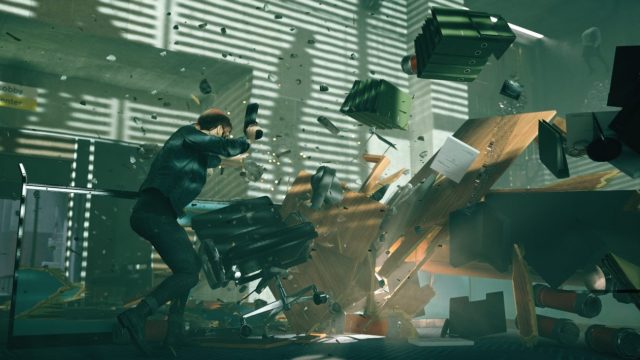
Those aforementioned skills come in handy, in what is a Metroidvania style title, wherein the player must repeatedly navigate through both familiar and unfamiliar parts of The Oldest House.
As we previously noted, this is an almost never-ending building, which makes its lack of discovery even more perplexing. Hell, it not only has multiple different floors (which isn’t abnormal of course), each with its own theme and look; it also encompasses a large quarry and other strange areas. You’ll want to do a good job of getting to know this setting, and committing its pathways, locations and important areas to memory, because one of Control‘s flaws is its lack of a good map. There is a map to be found, and you can open it so that it sits over top of the gameplay, but it’s both confusing and detrimental to the frame rate.
The frame rate is generally good during gameplay, but it isn’t without its faults. For instance, every time you open the map and try to walk with it open, things slow down. Meanwhile, each time I paused the game or opened the Xbox One’s guide, the frame rate would struggle for the first ten or fifteen seconds after I returned. Don’t let these negatives keep you from buying or playing this thing, though, because they’re quite minor in the grand scheme. Things are generally fine and stable (at least on Xbox One X) during general gameplay and combat, even when there’s lots of gunplay and stuff being thrown around.
Speaking of gunplay, it’s important to note that this is one of your main forms of attacking the enemy, which goes by the name of The Hiss and is some sort of infestation within the Bureau. Jesse picks up what is called a ‘service weapon’ shortly after arriving at the Oldest House, but doesn’t understand all of its capabilities at that point. You see, the service weapon is a powerful and mystic item, which can both transform and be upgraded. To this extent, the player can unlock and create a loadout with two different forms, including typical ones like a pistol, a shotgun and a submachine gun. Plus, it can transform into a sort of energy or laser-based explosive weapon, too.
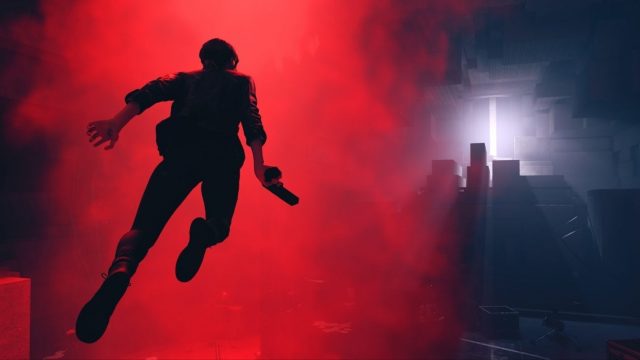
What’s nice about the service weapon is that it doesn’t use ammunition in the general sense. Instead, its ammo regenerates after a cooling down period. While this leaves you without your weapon for a period of relatively short seconds, Jesse’s abilities will be at your disposal, provided that you’ve unlocked them and completed their simulated trial courses. Throwing things at enemies can be even better than using weapons anyways, so you’ll want to get good at doing that, especially when you run out of ammunition and need to wait a quick moment for the gun to regenerate. Keep in mind that energy isn’t an unlimited resource, either, as it will also need to regenerate after heavy use.
Energy is responsible for allowing Jesse to pull off her supernatural moves and abilities, and that means more than just her telekinetic one. It’s also utilized to dodge away from enemy fire, or dash towards a ledge. Thus, if you’re someone who will favour these abilities over gunplay, make sure to look into upgrading your energy reserves and damage done as soon as possible. I personally focused on health first, and then moved on to these types of things. On top of that, I also tried to make good use of her basic melee attack early on, and it proved to be helpful whenever I’d run out of ammo and happened to be close to a foe.
Control isn’t an easy game, but it’s not overly difficult either, provided that you think during combat. There are no difficulty settings to be found, and Jesse’s health doesn’t regenerate, but blue healing orbs do drop from every downed enemy. This may not be ideal for some, but on the other hand it adds some strategy and tension to the combat, of which there’s quite a bit. Much more than we got in Quantum Break, which was disappointing given that its combat was actually pretty good.
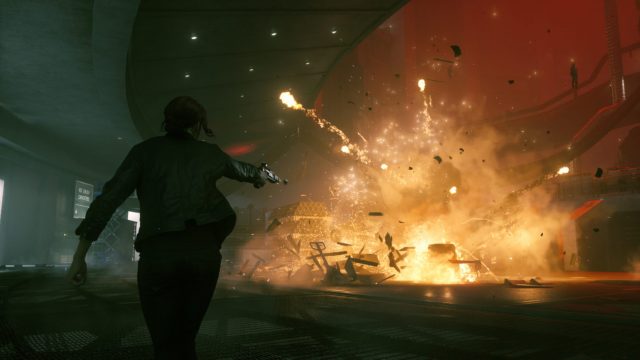
Different enemies will also require different tactics and abilities. The Hiss is a virus-like entity, and that is furthered by the fact that its inhabitants are not all the same. It’s taken over many of the Bureau’s members, and only a small amount of its ranks have survived. What this means is that Jesse will come across different types of formerly human foes, including basic agents, armored security guards and tank-like brutes. Each one will offer a different challenge, forcing the player to use altered tactics, although not to a severe degree. There is one type of enemy that requires a complete change of thought, though, because it seemingly cannot be defeated and must simply be avoided, or trapped if possible. It actually plays into a puzzle or two.
There are, in fact, puzzles, which is common in games that are affectionately dubbed as being Metroidvania in style. For the most part, they’re pretty straightforward and aren’t too intensive, although the odd one will make you think more than the others. They often just involve using the telekinetic ability to find and pick up energy cubes, which are then thrown into corresponding spaces, in order to start a machine, open an elevator or change the operations of some sort of mechanical things.
The idea behind this experience, though, is that you’ll visit and then revisit many of the same areas. Control has a pretty large map, which is full of labyrinthine floors, departments and subsections, and it can all get muddled and confusing. This can make the reliance on backtracking annoying at times. At least that was the case for me, as I got lost on numerous occasions.
Backtracking is involved in the main mission structure, as Jesse must often return to the executive chamber to talk to her allies. Furthermore, certain sections of the map can only be reached through previously visited ones, especially in the case of anything surrounding the power plant. Different NPCs will give you better security cards, too, allowing for more freedom and access. You may start off with security clearance one, but some doors require higher clearance.
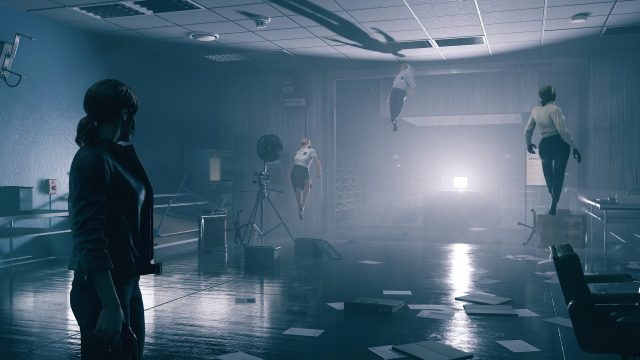
Side missions also factor in, and are also a big contributor to the aforementioned backtracking. Some aren’t possible until you have certain skills, or a certain level of security clearance, while others just ask you to go off the beaten path a bit. For instance, an odd but helpful janitor may request your help with cleaning up trash around the incinerator, or getting rid of a living organism that is clogging up the pipes. Meanwhile, other side quests send you to find and cleanse different possessed objects, which can lead to challenging boss battles.
It helps that Control offers a fast travel system, which is tied into its aptly named control points, of which there are quite a few. These circular areas can be found throughout the Oldest House, and are highlighted. Oftentimes enemies will have taken up camp around them, but that isn’t always the case. You’ll need to cleanse them either way, because the control points are an important asset. Not only do they allow you to quickly get from one part of the odd building to another; they also let you undertake challenges (eg. kill X amount of a certain type of enemies using this particular weapon for rewards), unlock new weapon types and purchase mods for both your weapons and character. Things like enhanced accuracy, added damage, or improved health regeneration upon picking up a blue orb.
The fast travel system is a definite help, but it likely won’t keep you from getting lost. The control points are relatively plentiful, but they’re in fixed locations, meaning you still need to find and run to the location of your next objective. Whether that’s a main mission, a side quest, or one of the bureau alerts that give you 20 minutes to rush to a location, defeat all of the enemies there and cleanse it of Hiss, it doesn’t matter. Rarely will fast travel take you directly where you need to go.
With this quirky, X-Files inspired campaign, you’re looking at between 10 and 20 hours of gameplay. It all depends on how much you do, and how thorough you are. I say that not only in relation to the game’s side missions and random alerts, but also because of the sheer amount of collectibles one can find within it. Before I was even done the seventh of ten main missions, I’d already found 120 collectibles, but I surely missed some, and had more to find later on. Said collectibles took the form of case files, memos and reports, all of which helped flesh out the game’s storyline.
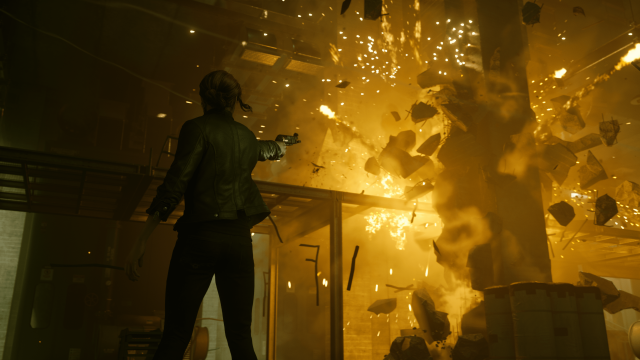
The narrative is further fleshed out by VHS and projection videos that often play by themselves in different parts of The Oldest House. There, players can watch and listen to an actor portraying a scientist, as he talks about the experiments that he and his lab mates undertook, as well as specifics about the Bureau and the possessed objects they try to control. This is very typical of Remedy games, though, and pays homage to previous titles like Alan Wake (which was excellent, and one of the better games of the last generation) and Quantum Break. Hell, there’s even a late night radio call in show that pays homage to Alan Wake.
All of the above is aided by quality presentation that manages to toe the line between the real and the strange. Control may deal with different planes of existence, altered realities, paranormal beings and other hidden things, but it presents them with a neat touch of realism. As weird as the Oldest House happens to be, it often looks like a traditional modern office building. Of course, certain things betray that look, including the red Hiss barricades, the quarry, the power plant and the possessed enemies themselves, but it’s true of a lot of the building. As such, you can expect to explore executive offices, mail rooms, labs and numerous other types of offices and conference rooms.
The visuals are quite good, giving the game a cinematic look and feel, which is accented by some pretty great lighting. The character models are all very detailed and realistic looking, and so are the environments themselves. They all have that sterile Remedy look to them, and that’s hard to really put into words. It’s not a bad thing, though!
On the other side of things lays some rather impressive audio, including well above-average voice acting that takes advantage of an interesting story and script, both of which aren’t without their quirky elements. The voice actors were chosen well, and the quality of their efforts, and the supporting sound effects, is tough to complain about. Then again, Remedy is usually at the top of their game when it comes to things like this. They’re all about presentation and atmosphere.
With all that having been said it’s probably pretty easy to tell that I enjoyed my time with Control and find it easy to recommend. That is certainly the case, as this is yet another high quality game from the folks at Remedy Entertainment, who seem like they’re incapable of making a bad one. While I didn’t enjoy it as much as Alan Wake, or find it to be their best ever, it turned out to be quite a good game, with only relatively minor issues in the form of a confusing map and some frame rate flaws. Metroidvania games aren’t always my favourite type, for whatever reason, but I had a good time with this one and hope that it will receive a good amount of attention despite its late summer release date.
This review is based on the Xbox One version of the game, which we were provided with by 505 Games.

